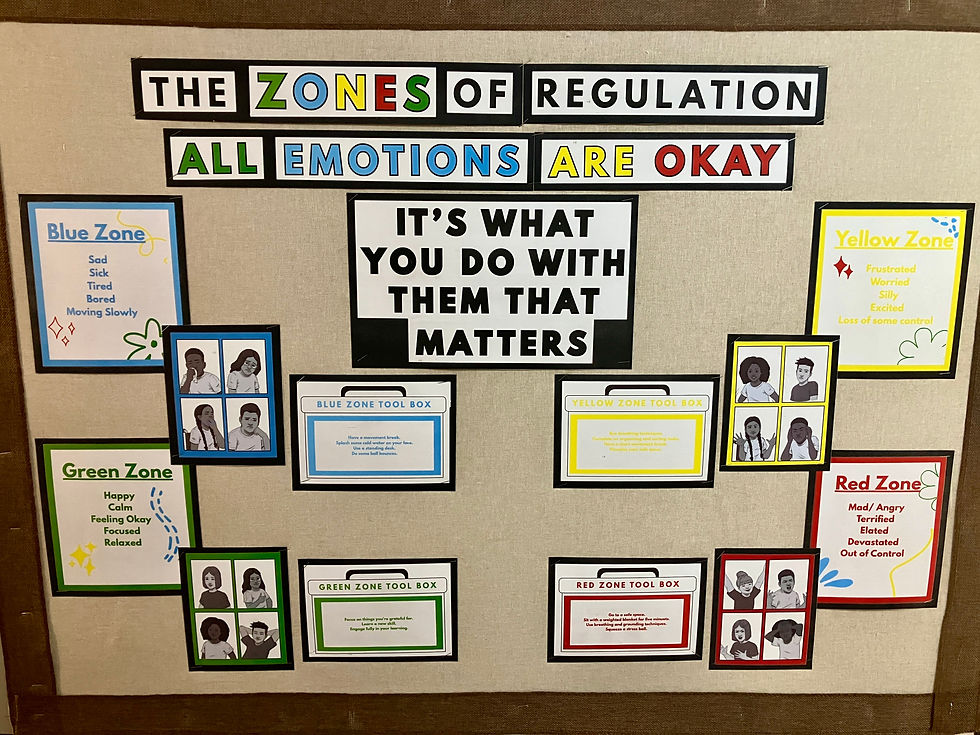Understanding the Zones of Regulation at The Lion Works School
- The Lion Works School

- Sep 26
- 2 min read
At The Lion Works School, we believe in nurturing not just academic growth, but also emotional well-being. That's why our therapy team integrates the Zones of Regulation framework into our personalised therapy sessions. This approach helps students recognise and manage their emotions, leading to improved self-regulation and overall mental health.
What Are the Zones?
The Zones of Regulation categorises emotions into four colour-coded zones:
Blue Zone: Low energy states like sadness or tiredness.
Green Zone: Calm, focused, and ready to learn.
Yellow Zone: Heightened alertness or stress, such as anxiety or excitement.
Red Zone: Extreme emotions like anger or terror.
Each zone represents a different state of alertness and emotion, helping children identify and understand their feelings.
Personalised Therapy Sessions
Our therapy team conducts individualised sessions where students:
Identify which zone they are in.
Explore triggers for different zones.
Learn strategies to move towards the Green Zone.
Practise these strategies in real-life scenarios.
These sessions are tailored to each student's needs, ensuring they develop effective coping mechanisms.
School-Wide Integration
The Zones of Regulation aren't confined to therapy sessions. They're embedded throughout our school environment:
Visual Displays: Colour-coded charts and posters in classrooms and common areas.
Daily Check-Ins: Students assess their current zone at the start of the day.
Classroom Activities: Teachers incorporate zone-based discussions and activities into lessons.
This consistent approach reinforces emotional awareness and regulation across all settings.
For Parents: Implementing Zones at Home
Parents play a crucial role in reinforcing the Zones of Regulation at home. Here are some practical tips:
Model Zone Language: Share your own feelings using zone terminology. For example, "I'm feeling frustrated; I think I'm in the Yellow Zone."
Create a Calm Space: Designate an area with calming tools like soft lighting, fidget toys, or soothing music.
Use Visual Aids: Display a Zones chart at home to help children identify their emotions.
Incorporate Zones into Daily Routines: Discuss zones during transitions, such as before meals or bedtime.
For a comprehensive guide, download the Parent's Guide to the Zones of Regulation, which offers detailed strategies and activities to support emotional regulation at home.
Miss Godfree

.png)





Comments